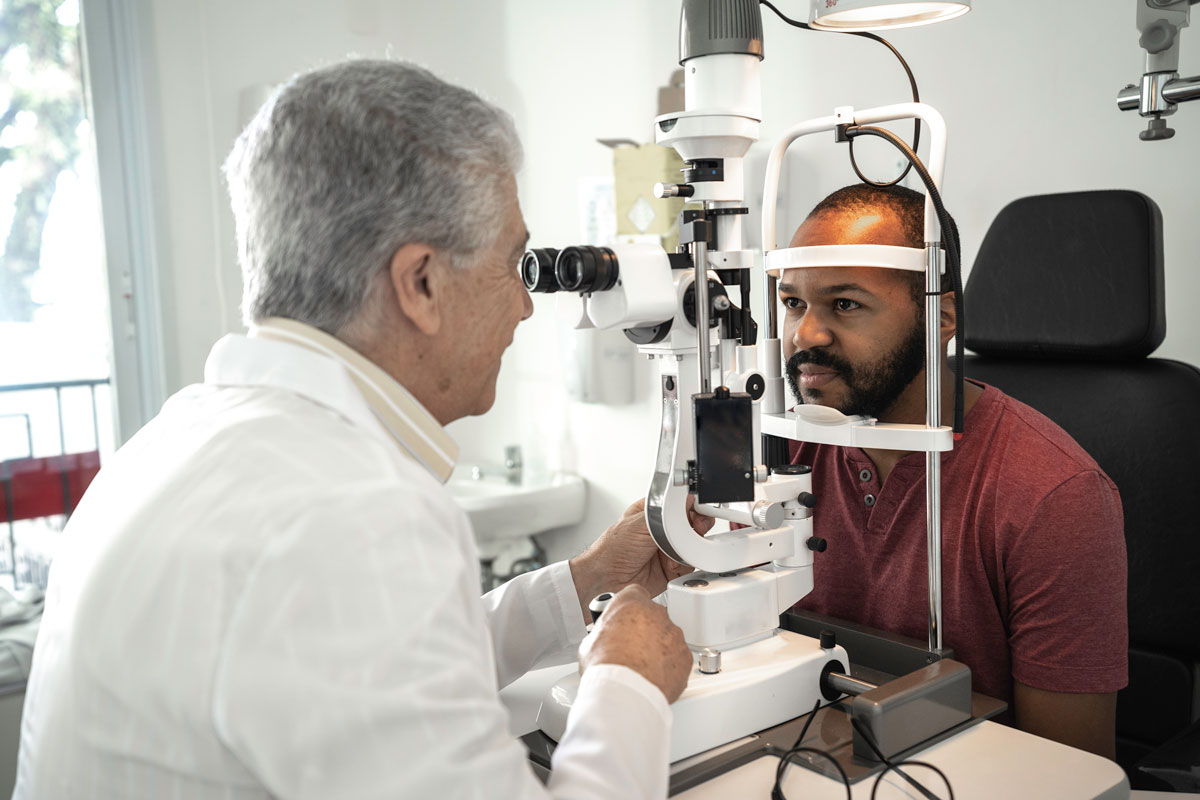 |
|
OCT diagnostic criteria doesn't take minorities such as African Americans into consideration, which may contribute to missed or delayed glaucoma diagnosis, study finds. Photo: Getty Images. |
While advancements in glaucoma detection have made the disease easier to combat with effective treatment, some diagnostic criteria have not been entirely effective. One new study, comparing retinal nerve fiber layer (RNFL) thickness and Bruch’s membrane opening minimum rim width (BMO-MRW) of people from either European or African descent, found consistently lower diagnostic performance in those of African ancestry. This is all the more concerning given the well-documented higher rates of glaucoma in this population.
The prospective study, recently publishing in American Journal of Ophthalmology, included analysis of 382 eyes from glaucomatous patients and 94 healthy eyes from controls. Global and sectoral RNFL thickness and BMO-MRW were measured with Spectralis OCT scans. Six different diagnostic criteria were used to compare the two groups, including: global measurement below the fifth or first percentile, greater than or equal to one of the six sector measurements below the fifth or first percentile, and superotemporal and/or inferotemporal measurement below the fifth or first percentile. The sensitivities and specificities of the measurements were then compared.
The researchers found that superotemporal and/or inferotemporal RNFL below the fifth percentile performed best as an indication of glaucoma within the nerve fiber–based classifications, displaying 89.5% sensitivity and 87.2% specificity, and this applied to both ethnic groups. For those of African descent, sensitivities and specificities for superotemporal and inferotemporal layer thickness, as well as minimum rim width measurements below the fifth percentile, were all lower than in European descent individuals.
As a result, diagnostic performance of RNFL and BMO-MRW metrics was consistently lower in the African descent group. The authors specifically point out that the minimum rim width criteria may fail to detect as much as up to one-third of glaucomatous eyes in individuals of African descent. They believe this might stem from a greater optic disc area, larger cup-to-disc ratio and bigger BMO area. Even further, they caution that printout of this criterion should be interpreted carefully, with up to one-fourth of those of African descent displaying a normal OCT.
They also mention that it is not standard to take race into account when determining a normal range for OCT measurements, despite multiple studies that suggest optic nerve parameters exhibit differences across ethnicities. Optic disc size is one parameter adjusted for in Spectralis, although this adjustment alone cannot account for the differences of diagnostic accuracy of thickness layer and rim minimum rim width of African descent group.
Because of the disparities demonstrated in all these criteria, the authors argue that database reference information should be examined for accuracy in diverse ethnic populations and that a larger, ethnicity-specific reference database is needed in OCT assessment. When considering application to practice, the authors caution, clinicians should be careful when using OCT since RNFLT and especially BMO-MRW criteria “are not adequate for diagnosing glaucoma in AD individuals, which may lead to misidentification of some glaucomatous eyes and failure to detect early glaucomatous damage in such individuals.”
El-Nimri N, Moghimi S, Nishida T, et al. Racial differences in detection of glaucoma using retinal nerve fiber layer thickness and Bruch’s membrane opening minimum rim width. Am J Ophthalmol. 2022. [Epub ahead of print]. |


